LinkedIn has emerged as a vital platform for B2B sales professionals, providing a unique arena for networking, lead generation, and brand building. With over 1 billion members globally, LinkedIn is not just a social network; it's a formidable tool that empowers businesses to connect with decision-makers and industry leaders. The platform's focus on professional development and networking makes it particularly appealing for B2B marketers looking to engage with motivated audiences.
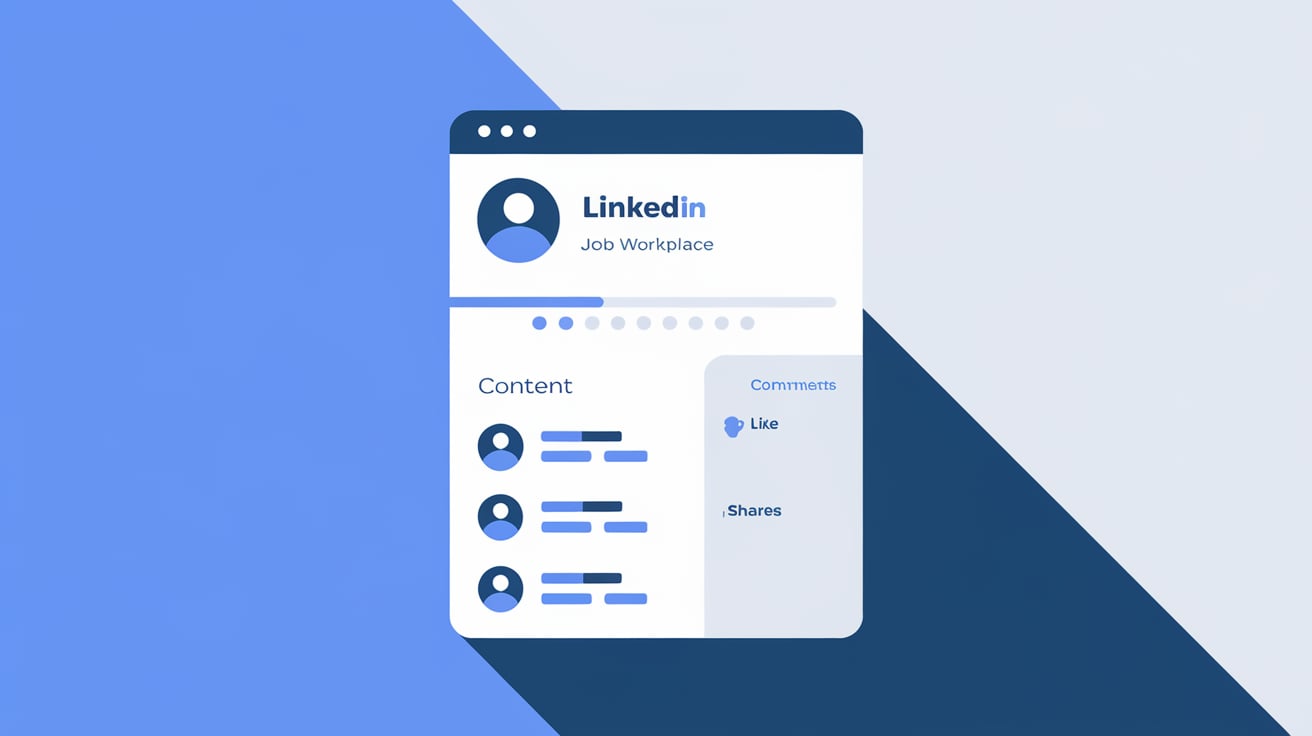
Content engagement on LinkedIn plays an instrumental role in driving lead generation and enhancing brand awareness. As businesses strive to capture their target audience's attention, the type of content shared and its engagement levels can significantly impact overall marketing success. Engaging content not only cultivates relationships but also encourages interactions that can lead to conversions and sales.
Understanding LinkedIn Engagement Metrics
Engagement on LinkedIn is all about the interactions that users have with the content on the platform. These include likes, shares, comments, and clicks. For B2B sales professionals, understanding these metrics is critical because they gauge how well the audience is receiving the content. Put simply - a higher engagement rate typically indicates that the content resonates well with users, leading to increased visibility and better lead generation possibilities.
The Core Significance of Engagement Metrics
Engagement metrics can be quite illuminating:
- Audience Interest Reflected Through Engagement Metrics: Metrics indicating high engagement are often a sign that the content is resonating well with the audience, providing important cues for future content strategies. For instance, if video posts consistently receive higher engagement than text-only updates, it would make sense to incorporate more videos in future content strategies.
- Engagement Metrics to Shape Content Strategy: By analyzing what types of content generate the most interaction, B2B sales professionals can tailor their messaging to better meet audience preferences. For example, native documents on LinkedIn are known to generate a whopping 3x more clicks than other types of content.
- Driving Lead Generation Through Engaging Content: Engaging content not only plays a role in establishing and nurturing relationships but also prompts potential clients to take definitive actions such as visiting a website, signing up for a newsletter, or requesting a demo. A staggering 79% of B2B marketers feel that LinkedIn is effective for lead generation.
- Optimizing Marketing Efforts Using Engagement Metrics: Regularly tracking engagement metrics allows marketers to optimize their campaigns based on actual data. For instance, posts that include images can result in a much higher comment rate compared to those without images.
- Benchmarking Performance Using Engagement Metrics: Understanding average engagement rates—generally around 2%, but potentially as high as 5-6% given quality content—offers a benchmark for comparing success against industry standards and helps identify trends and areas for improvement track over time.

By effectively leveraging engagement metrics, B2B sales professionals can create more meaningful and impactful content that drives engagement, thereby helping them fulfill their sales objectives. In the following section, we delve deeper into current LinkedIn engagement statistics that underline LinkedIn's effectiveness as a platform for B2B marketing strategies.
Current LinkedIn Engagement Statistics
Gaining insights into the current landscape of LinkedIn engagement statistics is key for B2B sales professionals who aim to optimize their content strategies. These metrics not only illuminate the effectiveness of different content types but also offer glimpses into user behavior and preferences.
Engagement Rates on LinkedIn
On average, LinkedIn boasts an engagement rate of approximately 2.20% across all types of content. However, this can vary based on content format and audience size. For example, businesses that effectively utilize native documents (PDFs uploaded directly to LinkedIn) experience significantly higher engagement, garnering 3x more clicks than other content types. This underlines the power of native documents on LinkedIn.
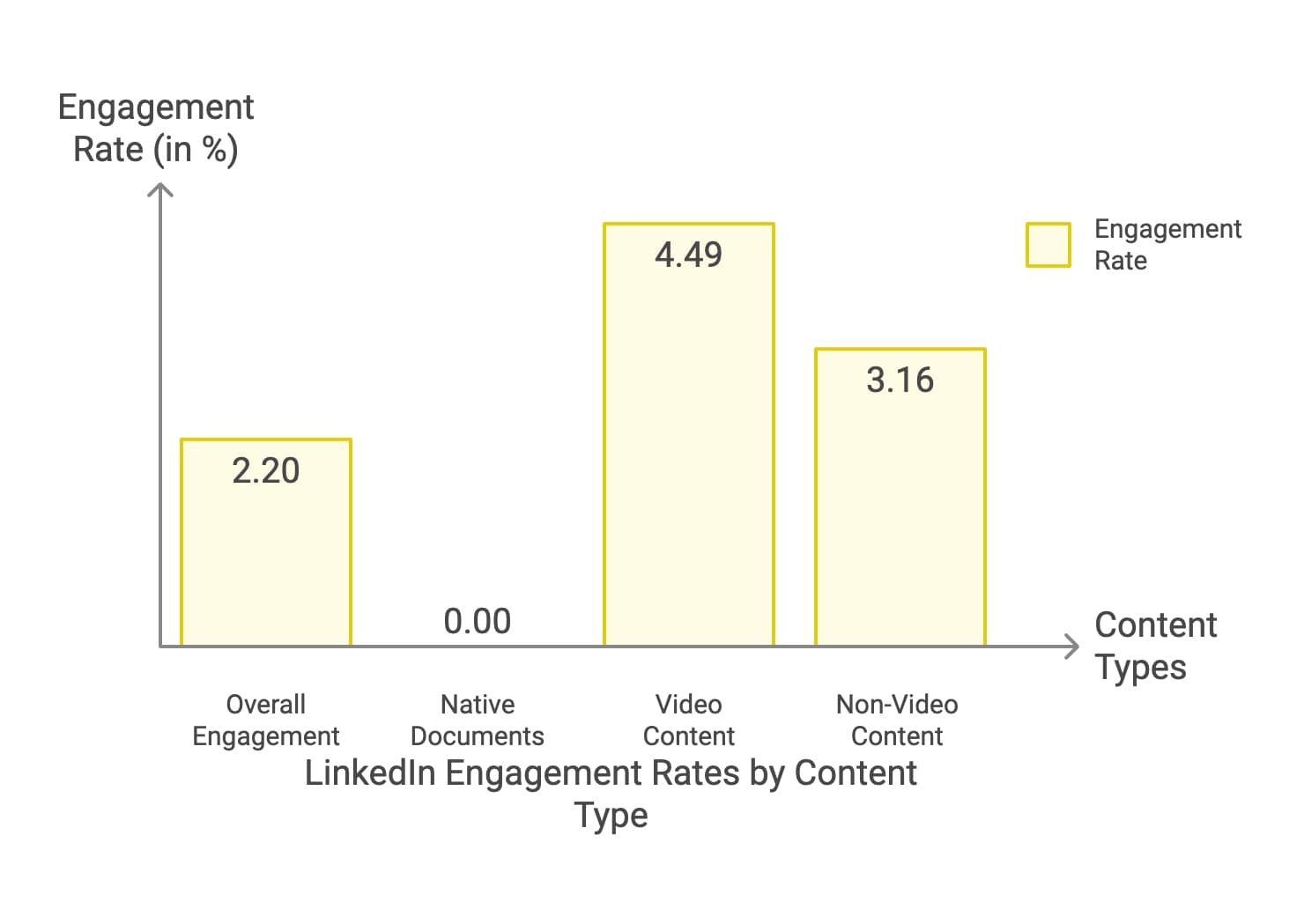
Moreover, video content on LinkedIn often outperforms text-based and other types of content, especially for accounts with fewer than 50,000 followers. These smaller accounts can achieve engagement rates of up to 4.49% when using videos, compared to the overall engagement rate of 3.16% for non-video content. This emphasizes the importance of incorporating videos into your B2B content strategy.
Performance of Different Content Types
Different content types have different performance metrics on LinkedIn:
- Native Documents: As highlighted previously, native documents generate higher engagement, making them an effective tool for B2B communication on LinkedIn.
- Video Content: Videos perform well on LinkedIn, garnering 5x more engagement than other formats. Additionally, it's not just organic video content but also video ads that hold users' attention, with users engaging nearly 3x longer with video ads than other ad types.
- Long-form Content: Posts that have between 1900 and 2000 words usually perform better, attracting more views and interactions than shorter posts.
- Image Posts: Visualization plays a key role in LinkedIn engagement, with posts containing images leading to a 98% higher comment rate. This indicates the power of visuals in communicating effectively with B2B audiences and inspiring them to interact.
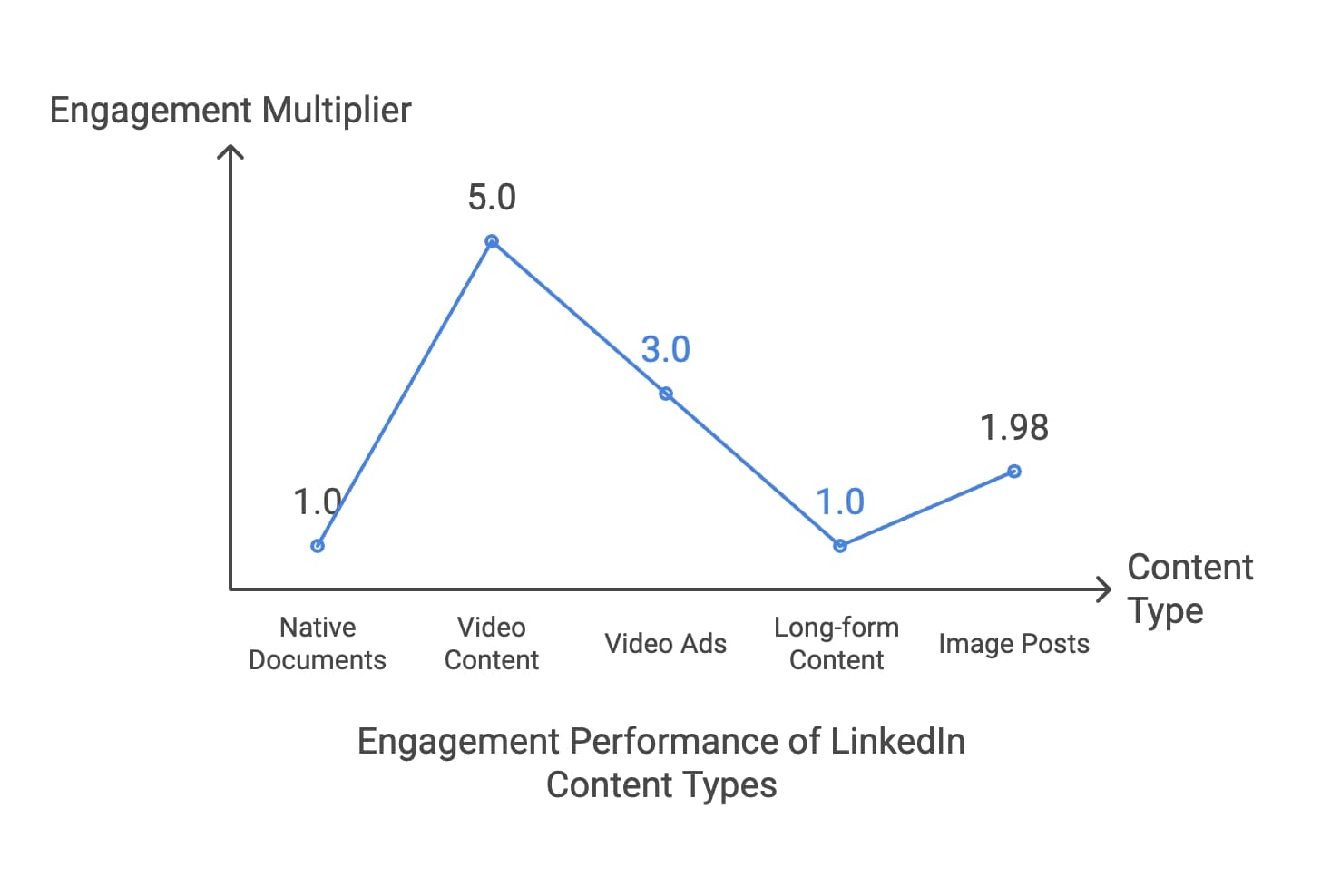
Audience Engagement Insights
Demographic insights reveal interesting trends about how users engage with content on LinkedIn:
- Nearly 50% of business users make purchase decisions based on content they find on LinkedIn. This underlines LinkedIn's influence on B2B buying behavior.
- LinkedIn has found widespread acclaim among marketers, with about 40% of them reporting that LinkedIn is the most effective platform for generating quality leads.
- LinkedIn users are typically active with about 40% of users organically engaging with a LinkedIn page each week. This highlights the potential of regular and quality posting to stimulate interactions.
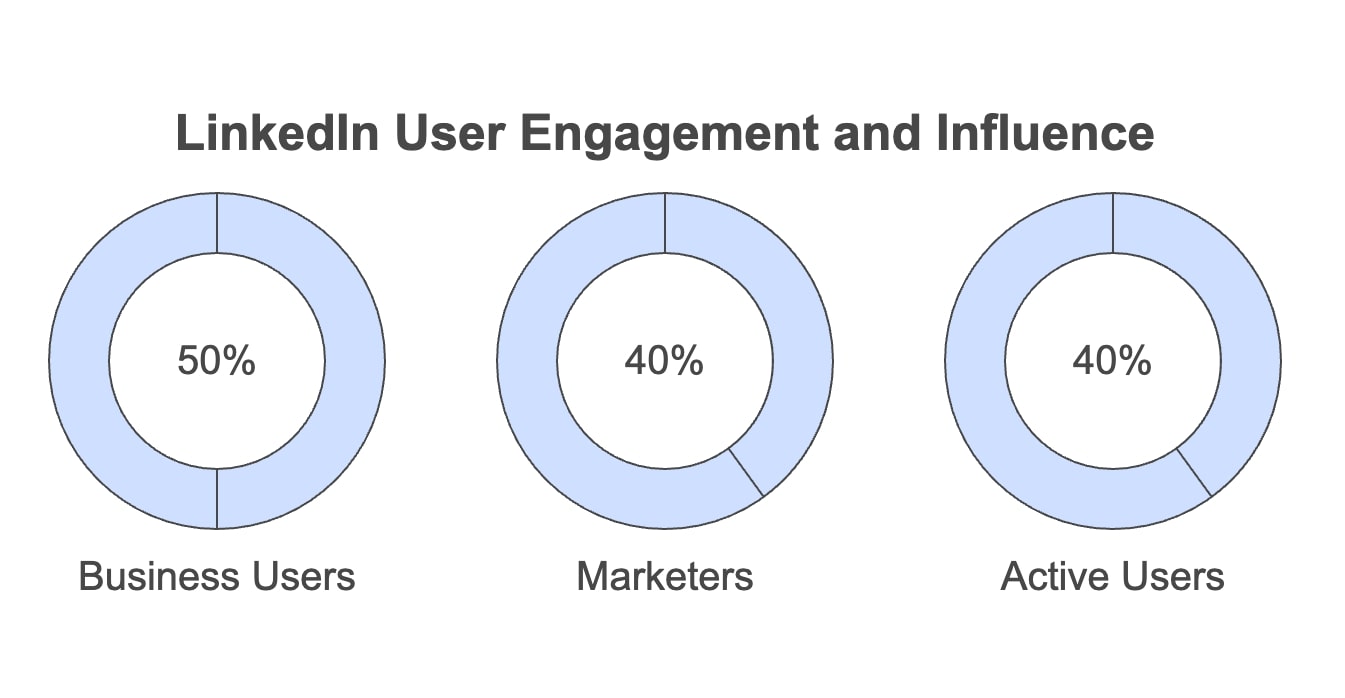
These statistics demonstrate the significance of LinkedIn as a potent platform for B2B marketing, offering ample opportunities for engagement that can lead to impactful business outcomes.
Demographic Insights on Engagement
To tailor content strategies effectively for B2B sales, it's crucial to understand the demographics of LinkedIn users. Knowing whom your content engages can help businesses target their messaging better and optimize their outreach initiatives.
User Demographics
Boasting a userbase of over 1 billion members worldwide, LinkedIn is a critically significant platform for B2B marketing. The demographics of LinkedIn users encompass insights that are quite telling:
- Age Groups: A bulk of LinkedIn users, approximating 38% of the platform's total audience, falls within the 25-34 age bracket. Attracting viewership from individuals who often hold decision-making roles, this age group becomes considerably relevant for B2B sales.
- Job Titles: Quite a large chunk of LinkedIn users are established professionals occupying positions of responsibility, namely managerial or executive roles. High-ranking executives, including those in the C-suite, comprise 45% of those who engage with content; thus, LinkedIn makes for the ideal platform to target decision-makers.
- Industry Representation: LinkedIn boasts active user engagement from various industries, from technology and finance to healthcare and marketing. This diversity allows B2B sales professionals to tap into a broad audience spread across diverse fields.
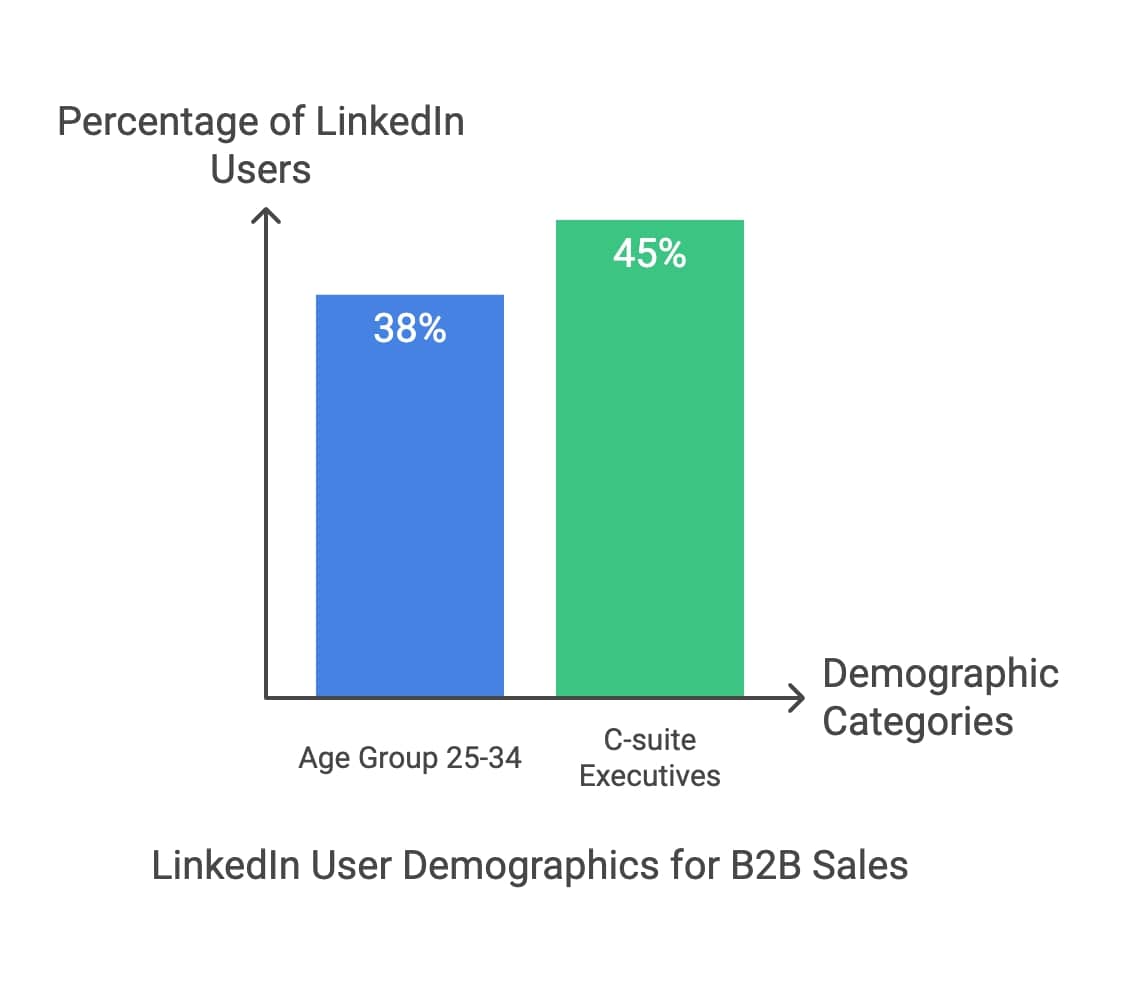
Engagement by Role
Statistics regarding user engagement delineated by role further elucidate the importance of tapping into specific user segments:
- Executives and Managers: As previously stated, 45% of the engagements are accounted for by executives, indicating that content aimed at this audience segment can open channels of high-impact interactions. Posts that offer insights into industry trends or thought leadership content often find resonance with executives.
- Sales and Marketing Professionals: Sales and marketing roles form 30% of the engaged users on LinkedIn. Content that centers on efficient practices, case studies, or innovative strategies likely performs well amongst this demographic.
- Influencers and Thought Leaders: The act of engaging with influencers or thought leaders on LinkedIn can significantly extend content reach. Posts which mention or tag industry leaders typically witness heightened engagement rates owing to the leaders' established credibility and follower base.
Gleaning insights from these demographics highlights the importance of crafting content that speaks directly to specific LinkedIn user groups' interests and needs. By understanding who engages with their content, B2B sales professionals can tailor their messaging to yield higher engagement, ultimately ramping up lead generation efforts.
Best Practices for Maximizing Engagement
To effectively leverage LinkedIn as a platform for B2B sales, it is essential to adopt best practices that enhance content engagement. By implementing these strategies, sales professionals can increase visibility, foster relationships, and ultimately drive lead generation. Here are key practices to consider:
Content Frequency
- Regular Posting: Consistency is key on LinkedIn. Companies that post regularly—ideally at least once a week—see a 2x lift in engagement compared to those that post less frequently. Regular updates keep your brand top-of-mind for your audience and encourage ongoing interactions.
- Optimal Timing: Analyze when your audience is most active on LinkedIn. Studies suggest that the best times to post are typically midweek, especially Tuesday through Thursday, during business hours. Experiment with posting at different times to find when your audience engages most.
Content Quality
- Create Valuable Content: Focus on producing high-quality, relevant content that addresses the pain points and interests of your target audience. Educational content, industry insights, and practical tips tend to resonate well with B2B audiences.
- Use Visuals: Incorporating images, infographics, and videos can significantly boost engagement rates. Posts with visuals receive 94% more views than those without. For example, using eye-catching graphics or short video clips can help convey complex information more effectively.
- Tell Stories: Storytelling is a powerful tool in content marketing. Sharing case studies or success stories can help humanize your brand and make your content more relatable, encouraging deeper engagement from your audience.
Utilizing Hashtags and Keywords
- Strategic Hashtag Use: Using relevant hashtags can increase the visibility of your posts. Aim for 3-5 hashtags per post that are relevant to your industry or topic. Research trending hashtags within your niche to ensure you reach the right audience.
- Incorporate Keywords: Including industry-specific keywords in your posts can improve searchability and relevance. This practice helps ensure that your content appears in searches conducted by potential leads looking for information related to your field.
Engaging with Your Audience
- Respond to Comments: Actively engaging with users who comment on your posts fosters a sense of community and encourages further interaction. Responding promptly shows that you value their input and can lead to deeper conversations.
- Encourage Discussions: Pose questions or invite opinions in your posts to stimulate discussion among your audience. Engaging users in conversation not only boosts interaction but can also provide valuable insights into their needs and preferences.
- Leverage Polls and Surveys: Utilizing LinkedIn’s polling feature can be an effective way to engage your audience while gathering feedback on relevant topics. Polls encourage participation and can spark discussions around the results.

Tools and Resources for Tracking Engagement
To optimize content strategies and ensure resonance with their target audiences, B2B sales professionals must measure and enhance engagement on LinkedIn. Different tools and resources can help track vital metrics associated with engagement, providing valuable performance insights. Here are some essential tools and resources for effectively tracking LinkedIn engagement metrics:
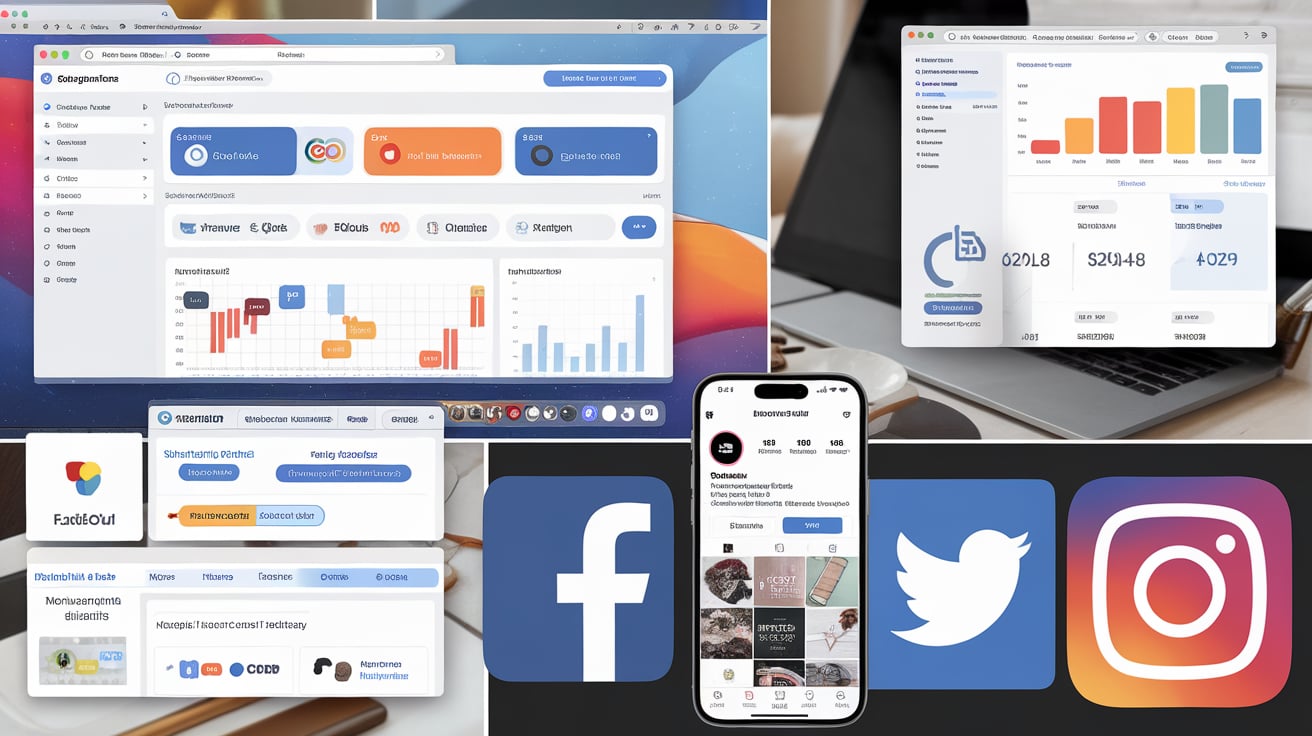
LinkedIn Analytics
- Built-in Analytics Dashboard: LinkedIn equips business pages with a comprehensive analytics dashboard, aiding users in monitoring key metrics like content performance, audience engagement, and follower demographics.
- Visitor Analytics: An intricate segment of LinkedIn’s inbuilt analytics, visitor analytics provides insights into who visits your company page, equipping content strategy professionals with impactful metrics like page views, unique visitors, and - most importantly - visitor demographics.
Third-Party Tools
- Sprout Social: This potent social media management tool offers a detailed analytics package for LinkedIn engagement, spanning metrics such as engagement rates, impressions, clicks, and trends in follower growth over time.
- Hootsuite: Hootsuite’s analytics capabilities empower users to track engagement metrics across a range of social media platforms encompassing LinkedIn, enabling monitorization of post performance, follower demographics, and overall trends in engagement.
- Keyhole: An analytics tool specializing in social media, Keyhole offers insights into engagement-centric metrics on LinkedIn, tracking impressions, reactions, comments, shares, and rates of engagement.
- Socialinsider: Equipped with this tool, one can dive deep into the analytics associated with LinkedIn pages, tracking critical metrics such as likes, comments, shares, and click-through rates (CTR) besides engagement-centric ones.
Proven Practices for Utilizing Analytics
- Establish Clear Goals: Consistent with the principle of measurement, clear objectives need definition prior to examining analytics. Are you seeking higher engagement rates, broader brand awareness, or increased lead generation?
- Frequently Review Metrics: Cultivate the habit of reviewing your LinkedIn analytics routinely, be it weekly or monthly, to observe trends in engagement over time, and modify your content strategy if necessary.
- Experiment with Content: Maximize the insights offered by analytics to experiment with different forms of content and discern formats most appealing to your audience.
- Engage Your Audience: Tailor your content and strategies to your audience using insights from engagement metrics. Nurture a proactive engagement practice with users who comment or share to foster stronger relationships.
Case Studies and Success Stories
To derive valuable insights for B2B sales professionals, we look into real-life demonstrations of organizations successfully leveraging LinkedIn content strategies. The cases discussed shine a light on how effectively nurturing content engagement can streamline visibility, solidify relationships, and elevate sales outcomes. Let's delve into some impressive examples of companies that have used LinkedIn to their advantage in engaging audiences and achieving their business objectives.
Case Study 1: HubSpot
Overview: A frontrunner in the realm of inbound marketing and sales software, HubSpot, has engineered their LinkedIn presence to engage their followers and generate potential leads efficiently.
Strategy:
- Content-Citizen Focus: HubSpot shares educational content religiously, including blog posts, infographics, and videos that deliver value to its target demographic.
- Engagement Tactics: HubSpot actively engages its audience by acknowledging comments, promoting discussions on posts, and using polls to garner feedback and spur engagement.
Results: Record heights of engagement have unfurled on HubSpot's LinkedIn, with some posts harvesting over 1,000 likes and hundreds of comments.
Case Study 2: Microsoft
Overview: Microsoft has proved successful in leveraging LinkedIn to promote its products and engage with professionals effectively.
Strategy:
- Visual Content: Microsoft shares visually addictive content, showcasing their reliable products and services through creative graphics and well-designed videos.
- Targeted Campaigns: Microsoft tailors custom campaigns focusing on particular industries or roles to cater to different audience segments.
Results: LinkedIn campaigns by Microsoft have tasted sweet success, with video posts witnessing an average engagement rate of 5%, remarkably higher than the platform average.
Case Study 3: Adobe
Overview: Adobe has effectively maneuvered its LinkedIn presence to connect with creative professionals and showcase its widely-used suite of products.
Strategy:
- User-Generated Content: Adobe encourages users to share the work they created using Adobe products.
- Educational Webinars: Adobe caters to its LinkedIn audience by regular hosting webinars and sharing valuable insights on industry trends.
Results: Adobe's LinkedIn strategy has blossomed into high engagement levels, with posts sporting user-generated content receiving up to 3x more shares than standard promotional articles.
Analysis of Engagement Tactics Used
Teasing out the thread common to all these successful B2B companies mentioned in these case studies, we can identify various effective tactics that invariably lead to increased engagement:
- Creating Valuable Content: A focus on generating high-quality and relevant content is common to all three companies.
- Actively Engaging With Followers: Active and thoughtful engagement with LinkedIn users encouraging interaction forms the bedrock of a successful engagement strategy.
- Utilization of Visuals and Videos: Visual components within posts enhance engagement rates in contrast to text-only posts.
- Targeted Messaging: Crafting content to resonate with specific audience segments guarantees profound and genuine engagement, and invariably, potential leads.
- Embracing User-Generated Content: Encouraging users to share their experiences with a product/service engenders raw and authentic engagement while consolidating brand loyalty.
Common Mistakes to Avoid
While leveraging LinkedIn for content engagement can significantly benefit B2B sales professionals, there are usual pitfalls that can obstruct their path to success. Awareness about these mistakes can help sales teams fine-tune their strategies and enhance their overall effectiveness on this platform. Here are some common missteps to circumvent when implementing LinkedIn content strategies:
1. Neglecting Audience Insights
Mistake: Overlooking the preferences and behaviors of the target audience can lead to ill-fitted content that does not align with potential leads.
Solution: Dedicate time towards researching demographic details, interests, and pressing issues of your audience. Utilize LinkedIn Analytics to gain insights into whom your content engages, subsequently tailoring your messaging infused with these insights.
2. Overlooking Content Variety
Mistake: Limiting oneself to a single type of content can induce audience fatigue and decreased engagement rates.
Solution: Plan your content strategies with diversification in mind, incorporating various formats like videos, infographics, polls and user-generated content. This keeps your audience engaged and caters to their diverse preferences.
3. Inconsistent Posting Schedule
Mistake: An erratic posting schedule can result in reduced visibility and engagement. Lack of regular updates from your end might lead to waning interest among your audiences.
Solution: Consistency is key. Develop a sustainable posting schedule aligning with the times your audience is most active on LinkedIn. Aiming for at least one post per week provides a healthy start.
4. Ignoring Engagement Opportunities
Mistake: Not responding to comments or questions on your posts can push your audience away.
Solution: Monitor comments on your posts actively and respond promptly to foster meaningful conversations.
5. Not Tracking Performance Metrics
Mistake: Neglecting to track engagement metrics can result in misguided insights about the effectiveness of your content strategy.
Solution: Regularly review LinkedIn Analytics and other tracking tools to observe the performance of your posts. This will help you identify trends and areas for improvement.
6. Focusing Solely on Promotion
Mistake: Overly promotional content can turn off potential leads who are seeking value rather than sales pitches.
Solution: Follow the 80/20 rule, where 80% of your content provides value (e.g., insights, tips, industry news) while only 20% focuses on promoting your products or services.
Conclusion
In today's digital landscape, LinkedIn stands out as a vital platform for B2B sales professionals seeking to enhance their engagement with potential clients and drive lead generation. Throughout this blog post, we have explored various aspects of LinkedIn content engagement, emphasizing the importance of understanding metrics, demographics, best practices, and common pitfalls.
Key Findings
- Understanding Engagement Metrics: Engagement metrics such as likes, comments, shares, and impressions are crucial indicators of how well your content resonates with your audience. High engagement rates often correlate with increased visibility and opportunities for lead generation.
- Current LinkedIn Engagement Statistics: The average engagement rate on LinkedIn is approximately 2.20%, with video content achieving even higher rates. Posts that incorporate visuals or user-generated content tend to perform significantly better than text-only updates.
- Demographic Insights: A significant portion of LinkedIn users are decision-makers and high-ranking executives. Understanding the demographics of your audience allows for more targeted content strategies that resonate with key stakeholders.
- Best Practices for Maximizing Engagement: Regular posting, creating high-quality and diverse content, utilizing hashtags effectively, and actively engaging with your audience are all essential strategies for boosting engagement on LinkedIn.
- Tools for Tracking Engagement: Utilizing LinkedIn’s built-in analytics alongside third-party tools like Sprout Social and Hootsuite enables sales professionals to track performance metrics effectively and refine their content strategies based on data-driven insights.
- Learning from Case Studies: Successful companies like HubSpot, Microsoft, and Adobe demonstrate the effectiveness of strategic content engagement on LinkedIn. Their focus on valuable content creation, active audience engagement, and leveraging visual elements has led to significant increases in engagement rates.
- Avoiding Common Mistakes: By steering clear of pitfalls such as neglecting audience insights, inconsistent posting, and overly promotional content, B2B sales professionals can enhance their effectiveness on the platform.
Final Thoughts
As B2B sales continue to evolve in a digital-first world, leveraging LinkedIn's capabilities for content engagement becomes increasingly important. By applying the insights gained from this analysis—focusing on audience needs, diversifying content formats, maintaining consistency in posting, and actively engaging with followers—sales professionals can optimize their strategies to foster meaningful connections that drive business success.
Embrace the power of LinkedIn as a tool for building relationships and generating leads. With a thoughtful approach to content engagement, you can position your brand effectively in front of key decision-makers and achieve your sales objectives.
FAQ
What types of content perform best on LinkedIn?
Video content, native documents, infographics, and educational articles tend to perform well due to their ability to engage users visually and provide value.
How can I improve my company's engagement rates on LinkedIn?
Focus on creating high-quality content that addresses your audience's needs, engage actively with comments, post consistently, and utilize analytics to refine your strategy.
What tools can help track LinkedIn engagement metrics?
Tools like LinkedIn Analytics, Sprout Social, Hootsuite, Keyhole, and Socialinsider provide valuable insights into engagement metrics across your posts.
How often should I post content on LinkedIn?
Aim for at least one post per week; however, increasing frequency based on audience engagement can yield better results.
Why is understanding demographics important for content strategy?
Knowing who engages with your content allows you to tailor your messaging and topics to better resonate with your target audience, ultimately driving higher engagement rates.
Check other articles you may want to look up:
Best 10 Twitter Email Finder Tools 2024
Top 10 LinkedIn Email Finder Chrome Extensions
How To Find Someones Email On Twitter?



